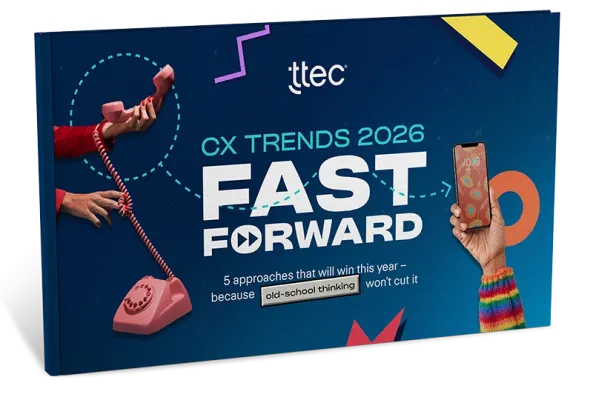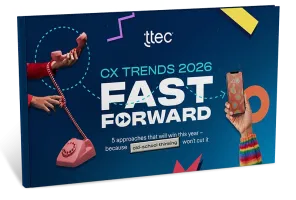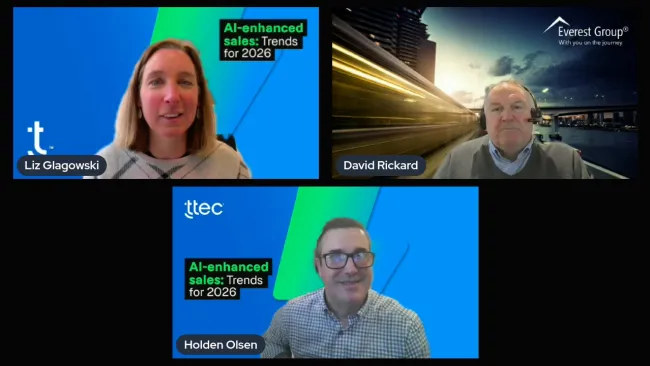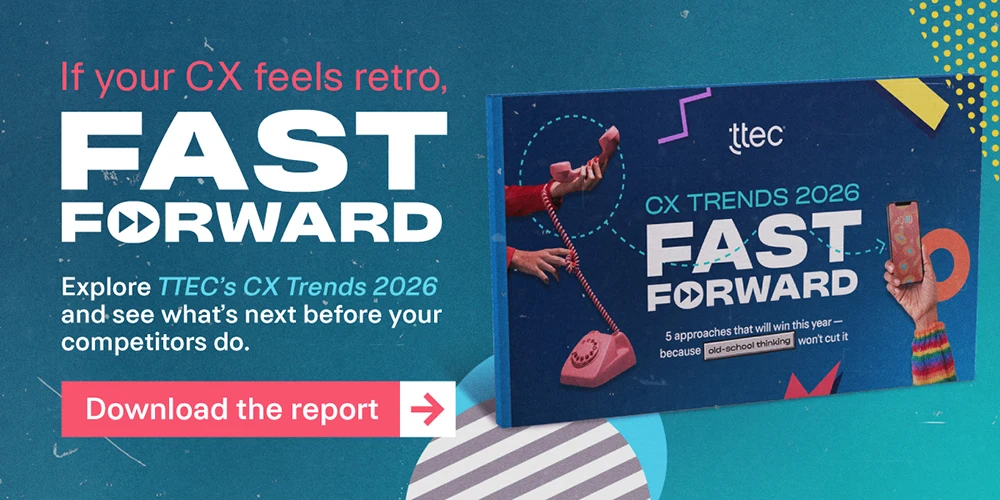We’ve reached a pivot point in healthcare.
I thought it would have happened sooner than now but here we are: Payers and providers are engaging in — no, hold on — they are initiating conversations about the role of AI in their long-term strategy.
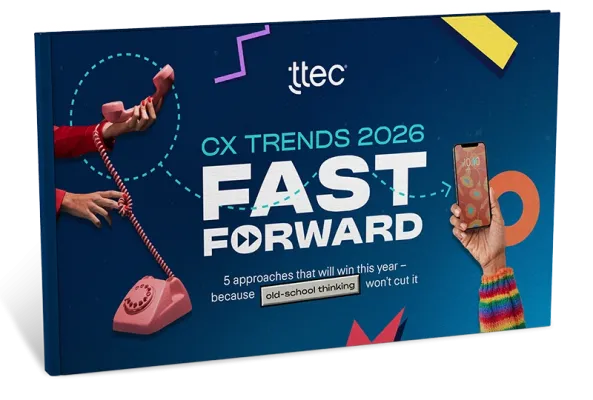
CX Trends 2026: Fast Forward
Our CX Trends 2026 Report dives into the innovations, insights, and strategies shaping the future of CX — so you can stay ahead while others catch up.

CX Trends 2026: Fast Forward
Our CX Trends 2026 Report dives into the innovations, insights, and strategies shaping the future of CX — so you can stay ahead while others catch up.

CX Trends 2026: Fast Forward
Our CX Trends 2026 Report dives into the innovations, insights, and strategies shaping the future of CX — so you can stay ahead while others catch up.
Be still my heart. The topic I’ve been trying to ignite for years no longer elicits blank stares. AI in healthcare is finally shifting from idle to action. Executives are not only talking about AI as they plan for 2026, they are asking the right questions: Who has the expertise to help me? Do I convene a team of suppliers and consultants, each with a specialized domain proficiency, or can I find a one-stop shop?
The epiphany: AI requires a balanced approach that blends expertise in the people component (human nature and all our quirks) together with mastery of fast-evolving technology. Augment that with TTEC’s Six Sigma credentials in patient and member journey mapping and you have a winning combo, a data-driven process improvement methodology that supports patient-centered care and drives improved health outcomes.
The new opportunities AI offers healthcare in the year ahead are among the highlights featured in TTEC’s newly released CX Trends 2026: Fast Forward report.
The center piece: Journey mapping
The tricky wicket? Few organizations fully understand the patient journey that’s unique to their own ecosystem.
You can’t jump into AI without first establishing where you are. Where is the friction? The dead ends? The circuitous pathways that create frustration and delays, put member and patient health at risk, and erode performance and worker morale in your contact center. Something as seemingly straight-forward as handling a patient call about prior authorization can devolve into an odyssey no one wants. But AI alone can’t fix that. You can’t graft AI onto bad processes and expect magic.
If you don’t know your current state, you’ll end up lifting and shifting a broken process. Journey mapping identifies pain points and uses statistical analysis to improve the member and patient experience. The best place to start is to interview stakeholders at all levels in the organization — executives, team leads, front-line healthcare advocates, patients and members, too.
The AI appetite is stoked
It’s no secret that healthcare has been slow to embrace AI. And most people get it. We’re talking about patients’ well-being — their lives — as well as vital security, privacy, and compliance considerations. Look how long electronic health records (EHR) adoption took.
Regulatory requirements, data readiness, technology integration costs, and lack of in-house expertise are the chief reasons only 30% of AI pilot tests ever reach production in healthcare, according to the AI Adoption Index report published by Bessemer Venture Partners, AWS, and Bain & Company.
The good news is the survey of 400 healthcare executives indicates a healthy appetite to embrace AI moving forward. In fact, 95% of respondents said generative AI will be transformative, with 85% of provider respondents and 83% of payer leaders expecting it to reshape clinical decision-making within three to five years.
The à la carte advantage
AI is not a “go-big-or-go-home” proposition. Healthcare organizations can cherrypick the AI-enhanced solutions that best fit their circumstances and align with their goals. Check out the whole menu of available choices and start small. Launch a limited-scope pilot test. Assess results and scale up if you like them.
Here’s a sampling of AI signature items built into our menu of offerings to improve contact center teams’ performance and enhance their interactions with members and patients.
TTEC Insights analyzes 100% of interactions, rather than the more typical 3% sampling, to drive data-driven decision-making. Team leaders can identify opportunities for improvement, streamline processes, and enhance customer experiences on a scale not possible without AI and automation.
TTEC Clarity offers tools to improve conversational fidelity by minimizing background noise on both ends of a call, for example, enabling healthcare advocates to focus on member interactions. Eliminating audio distractions creates a more professional, personalized experience because callers feel they have an associate’s undivided attention.
Another Clarity tool that enhances interactions is ADDI, whose real-time, bi-directional voice translation capability empowers associates to deliver world-class CX across more than 30 languages. ADDI can slash interpreter spend by 80%. Don’t believe an AI-enhanced dialogue can feel natural? Watch an ADDI demo or request one.
TTEC Let Me Know is an award-winning generative AI knowledge assistant, a platform that interprets customer questions and generates suggested responses, drawing upon a vast library of documents and resources — secure and fully compliant. It’s a Swiss Army knife that helps healthcare advocates resolve more complex issues immediately. Fewer delays. Fewer transfers. We’ve seen average handle time (AHT) of mid-tier performers slashed by 20%, First Contact Resolution (FCR) increase, while boosting customer satisfaction (CSAT) and Net Promoter Scores.
TTEC Perform analyzes employee data to provide personalized coaching, targeted feedback, and recognition for associates' achievements. By identifying areas for growth and development, we help associates enhance their skills. One healthcare client, a major payer, saw NPS surge 17% just five months after implementing TTEC Perform.
Enlightened healthcare executives realize a ham-fisted approach to AI practically guarantees disappointment. Thankfully, more and more leaders are gaining confidence to move forward with thoughtful AI initiatives in the year ahead.
Check out TTEC’s full CX Trends 2026: Fast Forward to explore five approaches that will win in the coming year because old-school thinking won’t cut it.

